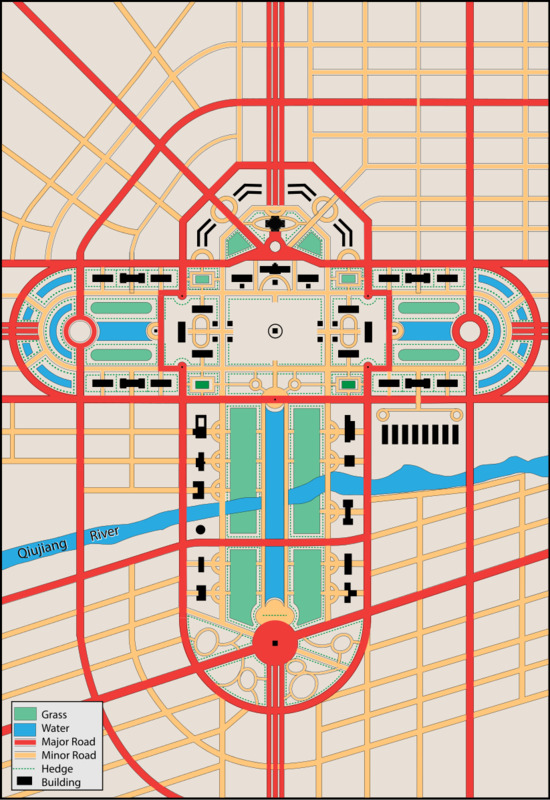The Greater Shanghai Plan 1927-1937
In 1927, the Nationalist Government of China created the Greater Shanghai Plan. The plan was radical but practical, and hoped to transform Shanghai into a hub for global commerce. Among the major elements of the plan was the creation of a large city center, the construction of rectilinear grid streets, and the construction of railways connecting the city center to other parts of the city. Though the plan was partially implemented between 1927-1937, Japan's attack and occupation of Shanghai ended these efforts. After the war, a new "Master Plan" was formed for Shanghai's development, and the Greater Shanghai Plan was abandoned.
Although the plan largely failed, the precedent it set for a larger vision of Shanghai's holistic development through developmental ‘plans’ has largely influenced the Shanghai Master plan of the present. Where the Greater Shanghai plan of the 1920s attempted to redevelop the old Shanghai district to compete with the developments of the International Settlements, the Master Plan of today seeks to build Shanghai into a city grand enough to compete with any other city on a global front.
The government complex depicted in the map above was to be constructed in the center of the city, importantly not in the International Settlments. This was one of the ways in which the Nationalist Government planned to remedy the resource and attention inequality between the Old Shanghai district and the International Settlments.
